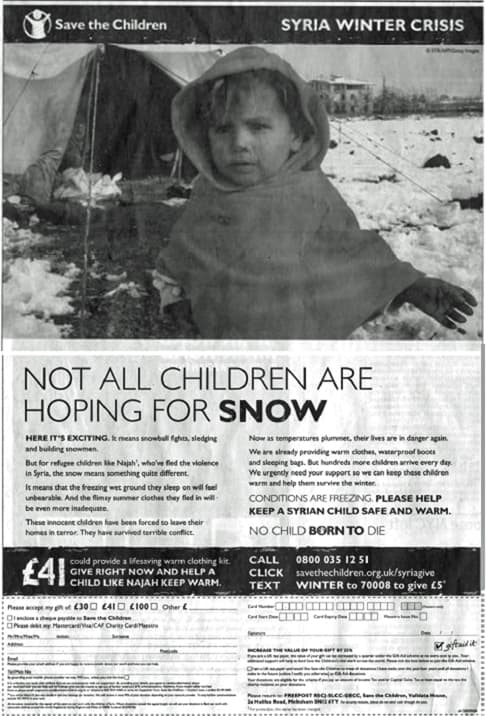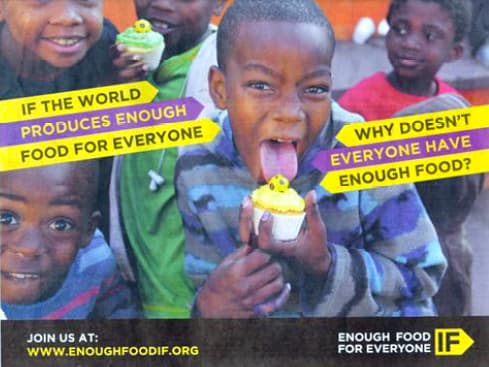An opportunity grabbed and one wasted
Andrew Papworth says that one of these ads cashes in on the Zeitgeist and the other is a damp squib.
- Written by
- Andrew Papworth
- Added
- May 15, 2013
So many fundraising campaigns just seem to trundle on like juggernauts – regardless of what is going on in the world around them. They hit on a formula that seems to work for them and stick to it come hell or high water. Up to a point this is understandable – so long as potential replacements are tested for deployment when, as will inevitably happen, your trusted banker ad wears out. There is a lot to be said for predictability of performance.
The downside is that it can prevent you from connecting with your audience by referring to issues which are high on their agenda at any particular time. It was, therefore, refreshing to see Save the Children run the ad shown below when heavy snow was forecast for much of the UK and people were busy buying snow shovels and sleds and emptying the supermarket shelves of staple foods in preparation for a siege.
It contrasts the anticipation of British kids looking forward to snowmen, snowball fights and sled rides with the fierce winter conditions being experienced by the child refugees from the civil war in Syria. We are used to seeing the likes of Emmaus and St Mungo’s run campaigns highlighting the plight of homeless people in freezing conditions, but it is unusual to find overseas aid charities making such a connection.
This ad deserves to have performed well because it helps to draw attention to those suffering from the fall-out of the Syrian power struggle after the media have rather lost interest and because it tackles the preconception common among Brits that the Middle East is always warm and sunny.
Its only possible weakness is the values of the ask: £30, £41, £100 or “other”. This seems a bit restrictive; there must be many people willing to help for whom a £30 minimum is unaffordable (and the text ask is just £5).
The ‘IF’ campaign against hunger is backed by dozens of international NGOs, including most of the major aid charities, and was launched in January with a reasonably strong but short PR effort and the ad shown below.
Their contention that there is enough food in the world to feed everyone is powerful but needs more explanation than we get here. This wouldn’t matter so much if the website to which the ad directs readers was more forthcoming and user-friendly but it is up its own backside with whizzy technology at the expense of involvement and explanation (http://www.enoughfoodif.org). Such an important message needs much clearer and more sustained communication.
A big wasted opportunity.




















